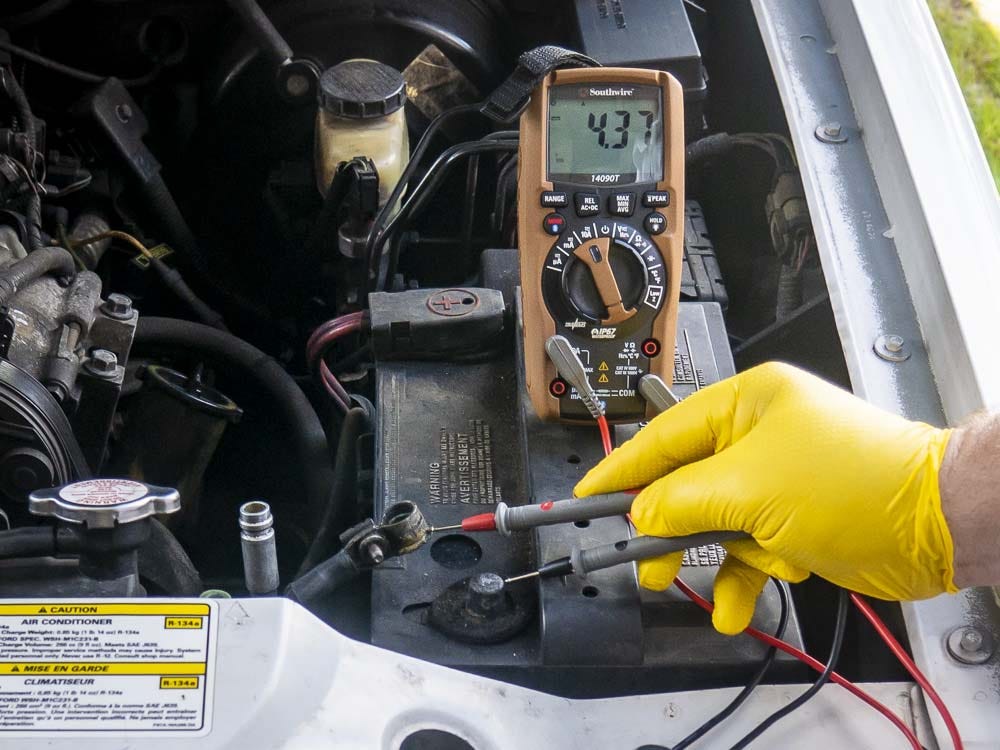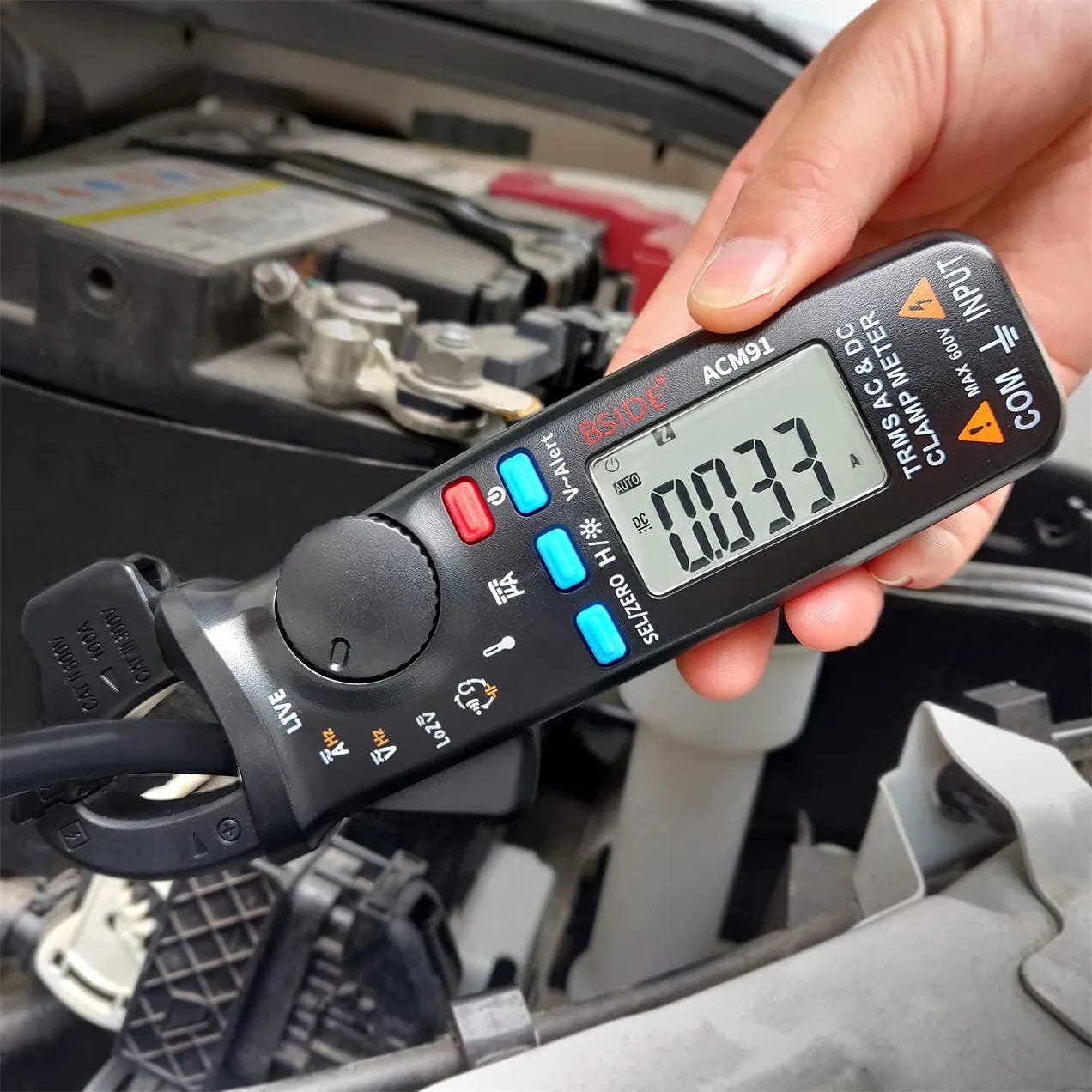Parasitic currents
What could cause a pair of Lithium batteries to have a 24% SoC loss in 12 days?
Dear Readers,
This question about parasitic current draw just came in from my Airstream Webcast a few days ago.
Hi Mike,
I am new to Airstream - I purchased a 2024 PotteryBarn (Hazel) manufactured standard with solar and two BattleBorn Li-batteries connected in parallel in August 2023 - my goal was to boondock.
I am getting a whitewash job from the service department that I NEED to top off my batteries monthly while it is in storage. I believe there is an electrical problem drawing down my batteries. The unit blew a number of fuses during construction according to my C-zone monitoring system, and another fuse blew while under tow. ( The BatteryDisconnect-active(no power) while under tow I was taking it to storage.) *Service identified that a wire had been damaged by a rivet and needed to be replaced.
My unit is currently in a 60 degree (heated) garage. I charged the battery to 100% SOC 13.27 Volts and performed Battery Disconnect using the button by the door. My manual states this disconnects the battery from my unit. I have only "woke up" HAZEL (my unit) to check the SoC and Voltage.
I have turned OFF every system, using on/off switch that has an on/off switch. My CO detector has no lights on when the battery disconnect is active(no power), yet service is blaming that device for the draw down. The only other connected system is the jack, but I would expect no power usage unless actively using it to raise or lower the unit.
Any thoughts on why I am having such a high rate of battery discharge? I am not an electrician, but I believe there is a short or bad ground or something incorrect. Any guess would help!
I am twelve days into my study: Dec 1, 2023 SOC 100% / Dec 13, 2923 SOC 76% ( I battery-disconnect after each monitor check.)
I watched your December 13, 2023 Li-Battery Airstream seminar (GREAT STUFF-THANK YOU!!) As I suspected, I should be able to store my unit without "topping off" the battery monthly and still have a decent SoC after 3-4 months.
Many thanks for any insight you can offer, - Leanne M.
Dear Readers,
Leanne is correct… A pair of Battle Born batteries should not lose 24% of their State of Charge (SoC) in 12 days. So there must be a substantial parasitic current. But just how much?
Let’s do the math!
I am twelve days into my study: Dec 1, 2023 SOC 100% / Dec 13, 2923 SOC 76%
So that’s a 24% SoC (State of Charge) loss in 12 days. I’ll assume these are 100Ah batteries, which is 200 Ah of total battery storage. Now, 24% of 200Ah equals a 48Ah loss of charge over 12 days (0.24 x 200Ah = 48Ah).
Just a little more math!
If you lost 48Ah SoC over 12 days, that’s 4Ah per day (48Ah / 12 days = 4Ah per day). And 4Ah per day divided by 24 hours equals 0.166Ah per hour which is 166mA (MilliAmps). So we’re predicting a parasitic current of 166mA to account for 48Ah SoC loss over 12 days.
How to test for this with a digital voltmeter
I’ll do an in-depth article and video in a few days, but you can use a standard Digital MultiMeter set on AMPs with the meter lead in the 10A input. However, you’ll need to disconnect the negative terminal on the battery bank and connect the meter leads in series. Never connect a meter set to Amps or mA directly across a battery as you’ll blow a meter fuse (at the least).
What about using a DC clamp ammeter?
This is easier since you simply have to clamp the meter around the negative battery terminal and measure the parasitic current directly. You don’t need to disconnect the negative battery wire for this test, so it’s really easy to do.
Finding the culprit
You can then pull the 12-volt fuses in your load center one at a time while monitoring the parasitic current with your meter. When the current draw drops to zero you’ve found the source of the current leak.
More on this test procedure next week. Let’s play safe out there… Mike









More details on meter brands and parasitic leakage possibilities next week. Please stand by…
two comments about your reply.
1. the diagram shows the multi meter in series with the negative cable but it doesn't clearly show that the negative cable is disconnected. you mention in the text but the diagram is no clear.
2. you say you can find the parasitic load by pulling the fuses in the load center. it is quite possible tha the fuse you to the parasitic load is not in the load center. if the parasitic load is something like a co sensor or propane sensor that is 'designed' to always be on the fuse for it may be directly cable to the battery and not through the load center.
other then the above, keep it up! your articles are good!